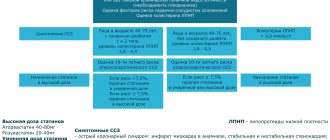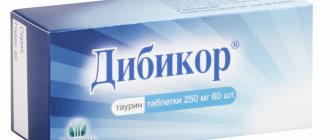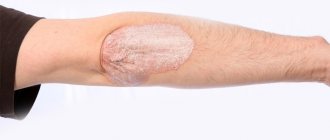Pentoxifylline in the treatment of various manifestations of atherosclerosis
In the modern pharmacological market, the formation of main groups of drugs that can in one way or another affect the properties of the vascular wall and the rheological properties of blood has already occurred. In the course of preparing various recommendations for the prevention and management of patients with various manifestations of atherosclerosis (cerebrovascular diseases, coronary heart disease, peripheral arterial diseases), the evidence base on the main active ingredients and drugs that can affect the prognosis, course and outcomes of diseases is analyzed and revised. In many scientific works, scientists often pay attention to drugs that have the ability to comprehensively improve microcirculation and at the same time can affect the vascular wall. One of these drugs is pentoxifylline (Polfilin 400 retard). It belongs to the group of vasodilators, but at the same time has many antiplatelet and angioprotective properties. Although the properties of pentoxifylline have already been sufficiently studied, various types of research are carried out again and again in various fields of medical science.
Pharmacological properties
First, it is necessary to dwell on the unique properties of pentoxifylline. It is a xanthine derivative and is similar in chemical structure to theobromine and theophylline. Today, the positive therapeutic effect of pentoxifylline is based on its influence on the biochemical properties of cellular elements of the blood, which are manifested in:
- increasing the filterability (deformability) of erythrocytes, neutrophils and monocytes;
- a decrease in the aggregation of erythrocytes and platelets, the level of fibrinogen in the blood plasma and a decrease in the activity of neutrophils (which causes a decrease in the formation of free radicals, adhesion and aggregation, the release of elastase, and a decrease in the levels of inflammatory cytokines in the blood) [1].
In addition, pentoxifylline affects the biochemical properties of blood: it reduces viscosity and improves its rheological properties. Active work is underway to study the effect of the drug on immune processes in the body. It can block the action of inflammatory cytokines that regulate the function of cells in the vascular wall. The effects of pentoxifylline on red blood cells and neutrophils are partly due to the inhibition of phosphodiesterase and the subsequent increase in intracellular cyclic adenosine monophosphate (cAMP), which plays an important role in controlling the activation and proliferation of monocytes, macrophages, T and B lymphocytes. The increase in cAMP levels caused by the drug occurs in parallel with a decrease in platelet aggregation, a decrease in the formation of oxygen radicals and tumor necrosis factor alpha by granulocytes [2]. Pentoxifylline also has a mild myotropic vasodilator effect, slightly reduces total peripheral resistance and has a positive inotropic effect. Due to the use of this drug, microcirculation and oxygen supply to tissues are improved. Pentoxifylline relaxes smooth muscle cells, including the vascular wall, by increasing the content of intracellular cAMP. Due to this property, it is classified as a vasodilator. Unfortunately, the contribution of the antispasmodic activity of the drug to clinical effectiveness in circulatory disorders is not decisive, since vasodilation in ischemic areas is close to maximum due to metabolic changes. Thus, at present, vasodilation as the main method of treating occluded arteries is not a priority.
Clinical Application
To date, the largest evidence base for the use of pentoxifylline and its positive effect on the outcome and course of the disease has been accumulated in the treatment of atherosclerosis of peripheral arteries and dementia (especially associated with cerebrovascular ischemia) caused by atherosclerotic changes.
Peripheral circulation disorders.
The therapeutic effectiveness of the drug for peripheral circulatory disorders is evidenced by an increase in the distance that the patient can walk, a decrease in the intensity of pain at rest, paresthesia, a decrease in spasms, healing of trophic ulcers, a decrease in swelling, cyanosis, and an improvement in local blood flow. Thus, according to the 2005 ACC/AHA recommendations for the management of patients with diseases of the peripheral arteries (lower limbs, renal, mesenteric) and abdominal aorta, pentoxifylline is prescribed at a dose of 400 mg 3 times a day as a second-line drug to cilostazol therapy in patients with intermittent claudication in order to increase walking distance. In addition, pentoxifylline is recommended as the drug of choice for borderline manifestations of intermittent claudication and in cases where the diagnosis has not yet been definitively confirmed. These claims are based on a meta-analysis of randomized placebo-controlled trials in which pentoxifylline was found to produce minimal but statistically significant improvements in pain relief and an increase in maximum walking distance from 21-29 to 43-48 m. According to the results of two large studies (128 and 150 participants), the number of patients whose maximum pain-free walking distance increased was 30 and 20%, respectively. One randomized controlled trial of 471 patients compared treatment with pentoxifylline in combination with cilostazol and placebo. The same recommendations note a study that studied this drug in patients with chronic ischemia of the lower extremities, which showed a statistically significant reduction in pain with intravenous administration of the drug. Pentoxifylline is much more effective not only than placebo, but also drugs such as naftidrofuryl, even in relatively low doses (300-600 mg/day) [4]. Some comparative trials on the effectiveness of pentoxifylline and other vasodilators (buflomedil and flunarizine) obtained the same data. A number of studies critically assessing the effect of various drugs in peripheral circulatory disorders have noted the highest therapeutic effectiveness of pentoxifylline. Only the administration of prostaglandin E1 (alprostadil) has proven to be more effective, but its parenteral administration is associated with certain problems and is very expensive [3].
Cerebrovascular disorders.
There are several large experimental studies examining the effects of pentoxifylline in the post-stroke period. One study examined post-ischemic treatment with the drug to reduce cortical infarct volume in a transient model of central cerebral ischemia in rats. Taking into account data from previous experimental studies, the drug has a neuroprotective effect against brain injury and general cerebral ischemia in experimental models. But the effect of pentoxifylline in the transient model of central cerebral ischemia remains to be studied. A study showed that administration of the drug at least 3 hours after the onset of stroke reduces cortical cerebral ischemic damage [7]. Another trial examined the possibility of administering pentoxifylline to prevent the occurrence of cerebral ischemic manifestations in rats prone to stroke and hypertension. They constituted an animal model that develops and creates the conditions that precede the appearance of brain disorders. The purpose of this trial is to evaluate the neuroprotective properties of the drug and its anti-inflammatory mechanisms of action in this stroke model. In a study using magnetic resonance imaging, it was found that brain damage when using pentoxifylline at a dose of 100 mg/kg/day developed in 80% of animals on the 70-80th day, while in 100% of rats who received this drug were not prescribed, such violations were observed on the 42nd day. Administration of 200 mg/kg/day of pentoxifylline completely protected the brain from developmental abnormalities. Pharmacotherapy prevented the accumulation of macrophages or CD4+, glial activation in brain tissue, and the appearance of inflammatory proteins in body fluids. The drug also showed protective effects when administered after the first onset of proteinuria (>40 mg/day). The findings indicate that, depending on the dose, pentoxifylline prevents the occurrence of direct brain damage and reduces inflammatory events [8]. Thus, experimental data indicate the undoubted benefit of the drug in the treatment of cerebrovascular disorders.
Although not everything is as good as we would like, and this is confirmed by official documents, which lay evidence-based medicine as the basis. According to the AHA/ASA guidelines for the early management of adult patients with ischemic stroke, the use of pentoxifylline is not recommended. However, it should be noted that this attitude for practitioners does not stem from the results of large multicenter studies, but due to the insufficient amount of statistically significant data on this issue. It follows from the text of the recommendations that in one of the trials, pentoxifylline and propentofylline were used by continuous intravenous infusion for 3 days immediately after the development of acute ischemic stroke in patients. Other studies in which the duration of drug administration was 5 and 7 days were conducted in 1993. Early fatal manifestations were recorded in the initial stage, during the first 4 weeks. These trials found a large reduction in early mortality, but these findings were not confirmed in a later study. Two subsequent trials showed a slight reduction in early mortality or significant disability. One study comparing the combination of pentoxifylline and aspirin with aspirin alone found a significant reduction in acute deaths. The same study examined the combined rate of early mortality and deterioration, but found no significant reduction in these combined events. Also, these and other trials confirmed the ability of aspirin to enhance the antiplatelet properties of pentoxifylline. In addition, patients with severe neurological symptoms had the greatest therapeutic benefit [5, 9].
Thus, most of the studies on which recent recommendations for the management of stroke patients with pentoxifylline are based are based on either outdated or few and small trials, although the majority of trials noted a positive effect of pentoxifylline. According to the Agency for Healthcare Research and Quality of Life (AHRQ) evidence-based research report for 2004, in the treatment of ischemic vascular dementia, a positive effect of pentoxifylline was noted in improving cognitive functions (general and specific) and global clinical assessment. For other clinical indicators, assessment was not made due to the small number of studies. However, when studying the effect of pentoxifylline in three placebo-controlled trials, treating 482 patients with predominantly multi-infarct dementia at a dosage of 1200 mg/day once or in three doses for 12-36 weeks, no statistically significant changes were found for all primary endpoints [6 ].
Heart failure. The last few trials have shown a beneficial effect of pentoxifylline on measures of cardiac dysfunction in patients with heart failure. Randomized, placebo-controlled trials (144 participants) tested the use of pentoxifylline versus placebo in patients with heart failure of various etiologies (idiopathic dilated cardiomyopathy, 3 studies; ischemic cardiomyopathy, 1 study). Beneficial effects on indicators of cardiac function in heart failure were noted in all classes of severity and regardless of etiology. All four studies showed a trend towards a reduction in mortality rates, but this effect was not statistically established. In summary, pentoxifylline may have beneficial effects across different NYHA functional classes of heart failure, improving ejection fraction and reducing mortality, but the trials conducted are small enough to provide conclusive conclusions. Large placebo-controlled studies involving a diverse group of patients are needed regarding the use of pentoxifylline in heart failure [10].
conclusions
Pentoxifylline, despite its fairly long existence on the pharmacological market, is an interesting drug approach to the treatment of various manifestations of atherosclerosis, in particular cerebrovascular diseases, where it is the basic drug. Surely, in the near future the drug will be used more widely for various diseases with impaired blood flow and microcirculation. As for its use in the treatment of peripheral circulatory disorders, in this area it remains an indispensable and excellent drug, with a small number of controllable side effects.
Literature
- Kamchatnov P.R., Chugunov A.V., Umarova Kh.Ya., Asanov A.Yu. Secondary prevention of ischemic stroke - the use of antiplatelet agents // Consilium medicum. – 2006. – No. 11. – T. 8.
- Drozdov S.A. Pentoxifylline in the treatment of cerebrovascular accidents. – M.: Center for Endosurgery and Lithotripsy
- Polivoda S.N., Samura B.B., Bondur V.V. Clinical aspects of the use of agapurine in therapeutic practice // Ukrainian Medical Hours. – 2000. – No. 4 (18). – P. 7-8.
- ACC/AHA 2005 Practice Guidelines for the Management of Patients With Peripheral Arterial Disease (Lower Extremity, Renal, Mesenteric, and Abdominal Aortic) // Circulation. – March 21, 2006. – P. 513.
- Guidelines for the Early Management of Adults with Ischemic Stroke // Stroke. – May 2007. – P. 1682.
- Pharmacological Treatment of Dementia summary Agency for Healthcare Research and Quality (AHRQ) by McMaster University Evidence-based Practice // Technology Assessment. – April 2004. – No. 97. – P. 7.
- Vakili A., Khorasani MZ Post-ischemic treatment of pentoxifyline reduces cortical not striatal infarct volume in transient model of focal cerebral ischemia in rat // Brain Res. – January 2007. – Vol. 1144. – P. 186-191.
- Banfi C., Sironi L. Pentoxifylline Prevents Spontaneous Brain Ischemia in Stroke-Prone Rats // Journal of Pharmacology And Experimental Therapeutics. – June 16, 2004.
- Bath PM, Bath-Hextall FJ Pentoxifylline, propentofylline and pentifylline for acute ischemic stroke // Cochrane Database Syst Rev 2004; 3:CD000162.
- Batchelder K., Mayosi BM Pentoxifylline for heart failure: a systematic review // S Afr Med J. – March 2005. – Vol. 95 (Suppl. 3). – P. 171-175.
previous article
Clinical protocol “Diagnostics and treatment of patients with diseases of the nervous system”
next article
Disturbance of intestinal microbial ecology
Top
Pentoxifylline tab 100mg N60 (Organic)
Pentoxifylline is a xanthine derivative. Improves microcirculation and rheological properties of blood. The mechanism of action is associated with inhibition of phosphodiesterase and an increase in the content of cyclic 3,5 adenosine monophosphate (3,5-AMP) in platelets and adenosine triphosphate (ATP) in erythrocytes with simultaneous saturation of energy potential, which in turn leads to vasodilation, a decrease in total peripheral vascular resistance, an increase in systolic and minute blood volume without a significant change in heart rate. By expanding the coronary arteries, it increases the delivery of oxygen to the myocardium (minor antianginal effect), pulmonary vessels improves blood oxygenation. When administered intravenously, it leads to increased collateral circulation, an increase in the volume of blood flowing through a sectional unit. Reduces blood viscosity, causes platelet disaggregation, increases the elasticity of red blood cells (due to the effect on the pathologically altered deformability of red blood cells). Improves microcirculation in areas of impaired blood circulation. In case of occlusive damage to peripheral arteries (“intermittent” claudication), it leads to an increase in walking distance, elimination of night cramps of the calf muscles and pain at rest. Pharmacokinetics The drug after administration is quickly metabolized in the liver. During the metabolism, two main metabolites are formed: 1-(5-hydroxyhexyl)-3,7-dimethylxanthine (metabolite I) and 1-(3-carboxypropyl)-3,7-dimethylxanthine (metabolite V), which have activity similar to pentoxifylline . 1.5-2 hours after infusion, the concentration of metabolites I and V in the blood plasma is, respectively, 5 and 8 times higher than the concentration of the original substance. By the 8th hour, the concentration of pentoxifylline and its metabolites in the blood decreases significantly (to 10% of the initial value). The half-life is from 30 minutes to 1.5 hours. It is excreted mainly by the kidneys (94%) in the form of metabolites (mainly metabolite V), and by the intestines (4%). in the first 4 hours, up to 90% of the dose is eliminated. 2% of the drug is excreted unchanged. Pentoxifylline and its metabolites do not bind to plasma proteins. It is excreted in breast milk. In severe renal impairment, the elimination of metabolites is slowed down. If liver function is impaired, there is an increase in half-life and increased bioavailability.
Pentoxifylline
With antihypertensive drugs
Pentoxifylline increases the risk of developing arterial hypotension when used simultaneously with antihypertensive drugs (for example, angiotensin-converting enzyme (ACE) inhibitors) or other drugs with a potential antihypertensive effect (for example, nitrates).
With drugs that affect the blood coagulation system
Pentoxifylline may enhance the effect of drugs that affect the blood coagulation system (direct and indirect anticoagulants, thrombolytics, antibiotics such as cephalosporins).
With the combined use of pentoxifylline and indirect anticoagulants (vitamin K antagonists), post-marketing studies have reported cases of increased anticoagulant action (risk of bleeding). Therefore, when starting to take pentoxifylline or changing its dose, it is recommended to monitor the severity of the anticoagulant effect in patients taking this combination of drugs, for example, regularly monitor the INR (international normalized ratio).
With cimetidine
Cimetidine increases the concentration of pentoxifylline and active metabolite I in the blood plasma (risk of adverse reactions).
With other xanthines
Co-administration with other xanthines may lead to excessive nervous stimulation.
With hypoglycemic agents (insulin and hypoglycemic agents for oral administration)
The hypoglycemic effect of insulin or oral hypoglycemic agents may be enhanced by simultaneous use of pentoxifylline (increased risk of hypoglycemia). Strict monitoring of the condition of such patients is necessary, including regular glycemic control.
With theophylline
In some patients, with simultaneous use of pentoxifylline and theophylline, an increase in theophylline concentration is observed. This may subsequently lead to an increase or worsening of theophylline-related side effects.
With ciprofloxacin
In some patients, with simultaneous use of pentoxifylline and cirofloxacin, an increase in the concentration of pentoxifylline in the blood plasma is observed. In the future, this may lead to an increase or intensification of side effects associated with the use of this combination.
With platelet aggregation inhibitors
With simultaneous use of pentoxifylline with platelet aggregation inhibitors (clopidogrel, eptifibatide, tirofiban, epoprostenol, iloprost, abciximab, anagrelide, NSAIDs [except selective cyclooxygenase-2 inhibitors], acetylsalicylic acid, ticlopidine, dipyridamole), a potential additive effect may develop, increasing the risk of bleeding. . Therefore, due to the risk of bleeding, pentoxifylline should be used with caution simultaneously with the above platelet aggregation inhibitors (see section "With caution").
Publications in the media
(Pentoxifyllinum) INN
Synonyms. Agapurin, Trental.
Composition and release form. Tablets and dragees 0.1 g of pentoxifylline; 2% solution in ampoules of 5 ml.
Indications. Peripheral circulation disorders; cerebrovascular diseases; vascular pathology of the eyes; functional hearing impairment; diabetic nephroangiopathy.
Pharmachologic effect. Pentoxifylline is a derivative of methylxanthine, has a vasodilating effect, improves microcirculation, rheological properties of blood, and oxygen delivery to tissues. It realizes its effect by inhibiting phosphodiesterase and accumulating c-AMP in the smooth muscle elements of blood vessels and platelets. Increases the elasticity of red blood cells by inhibiting phosphodiesterase and increasing the content of c-AMP in red blood cells. Reduces blood viscosity as a result of a decrease in platelet aggregation and fibrinogen concentration in the blood plasma.
Pharmacokinetics. The drug is almost completely absorbed from the gastrointestinal tract into the blood; there is a slight “first pass” metabolism through the liver. Peak plasma concentrations are reached within 2-4 hours. Binds to the red blood cell membrane. Metabolized by red blood cells and then by the liver, forming several active metabolites. T1/2 of unchanged substance is from 0.4 to 0.8 hours, metabolites - from 1 to 1.6 hours. Excreted by the kidneys in the form of metabolites and in feces (less than 4%). In elderly patients, the bioavailability of pentoxifylline may be increased due to decreased excretion, potentially increasing the toxicity of the drug.
Side effects. Stomach discomfort, nausea, vomiting, diarrhea; allergic reactions; dizziness, headache.
Contraindications. Acute myocardial infarction; hemorrhage in the brain, in the retina of the eye; massive bleeding; severe sclerosis of cerebral and coronary vessels; pregnancy.
Adverse reactions when interacting with other drugs. Taking pentoxifylline and thrombolytic agents causes prolongation of prothrombin time and bleeding. The antihypertensive effects can be enhanced by the combined use of antihypertensive drugs and pentoxifylline, and its dose must be reduced. Cimetidine significantly increases the equilibrium concentration of pentoxifylline in the blood, which can lead to increased side effects when taking these drugs simultaneously. When taking antidiabetic drugs and pentoxifylline simultaneously, the dose of the latter is reduced, since this combination enhances the effect of hypoglycemic drugs. Sympatholytics or xanthines (others) when taken with pentoxifylline may cause excessive stimulation of the central nervous system.
Information for the patient. Absorption of the drug from the gastrointestinal tract into the blood slows down, but does not decrease, if pentoxifylline is taken after meals. It is recommended to take the drug with food. The drug is usually started with 0.2 g 3 times a day; Without chewing the tablets or dragees, take them with a sufficient amount of water. After the therapeutic effect occurs, the dose is reduced to 1 tablet 3 times a day. Hypersensitivity to pentoxifylline or other methylxanthines is possible. If liver and kidney function are impaired, the risk of side effects increases. Take the missed dose as soon as possible and do not take it at all if there is almost no time left before the next dose; do not take double doses. Avoid smoking, as nicotine constricts blood vessels. If side effects from the gastrointestinal tract and central nervous system occur, it is recommended to reduce the dose of pentoxifylline, but if these effects are persistent, then treatment with the drug should be discontinued.








